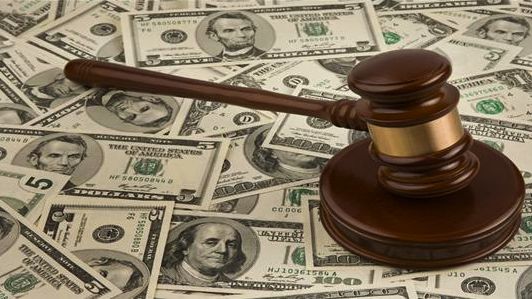Apple, Samsung present closing arguments
Day 14 - Deliberations begin Wednesday

Arguments in the epic patent battle between Apple and Samsung drew to a close Tuesday as both sides presented their closing arguments with the signature flare that's marked this four-week trial.
Before the lawyers could get to talking, the jury walked into a nightmare as a 109-page document outlining their instructions, to be put into effect as they enter deliberations Wednesday, was handed to them.
"I need everyone to stay conscious during the reading of the jury instructions, including myself," U.S. District judge Lucy Koh reportedly said. "[We're] going to periodically stand up, just to make sure we're all alive."
Koh managed to whittle the case's verdict document down from 22 to 20 pages, though how many of its 700-plus questions she knocked off, if any, remains unclear.
In all, 84 instructions were read, covering everything from patent law to trade dress to how to determine whether Samsung's products were "substantially the same" as Apple's designs.
Once the judge and jury got through the lengthy instructions, four hours of closing arguments commenced.
Copying the 'world's most successful product'
First up was Apple, with counsel Henry McElhinny centering his elocution on creating a chronology for the jury.
Are you a pro? Subscribe to our newsletter
Sign up to the TechRadar Pro newsletter to get all the top news, opinion, features and guidance your business needs to succeed!
"If you want to find out what really happened, if you want to see the truth, you need to make a chronology," McElhinny reportedly said.
He then laid out exactly how Samsung copied and profited from Apple's designs.
By Apple's estimations, between 2004 and 2007, the South Korean company produced phones that in no way resembled the iPhone.
However, once the company, which was facing a "crisis of design," saw the shocking impact Apple's iOS device had on the world, they wanted a piece of the profits.
How were they going to achieve that? By copying four years of development work by Apple in three months.
Suddenly, Samsung's profits soared, McElhinny argued, thanks to the product of its plagiarizing, the Galaxy S, born of the company's top echelons scheming to copy the "world's most successful product."
McElhinny turned to a court document presented as evidence almost two weeks ago, an internal Samsung memo providing a side-by-side comparison of the iPhone and the Galaxy SI.
Referred to by Samsung as a "relative evaluation report," or a standard rundown of competitors' devices, McElhinny used it as venom against the corporation.
"They sat with the iPhone and went feature by feature, copying it to the smallest detail," he said.
"In those critical three months, Samsung was able to copy and incorporate the core part of Apple's four-year investment without taking any of the risks, because they were copying the world's most successful product."
Apple confronted Samsung about the infringement, McElhinny said, as evidence of a rejected licensing agreement can attest to.
However, Samsung rebuked Apple's efforts for compromise and filed its own suit against Apple, taking "us down the road that has led us to this courthouse."
Where are your execs?
McElhinny also noted that his company brought two of Apple's most senior executives – Phil Schiller, senior vice president of worldwide marketing, and Scott Forstall, senior vice president of iOS – to testify, while Samsung led no executives to the witness stand.
"From the very beginning, Samsung has disrespected the process," McElhinny said. "Apple brought you two of its most senior executives: Schiller and Forstall. They were willing to face cross.
"No Samsung execs were willing to come here from Korea and answer questions under oath. Instead of witnesses, they sent you lawyers."
To Samsung's point that Apple's designs, like flat screens and rounded corners, are obvious, functional and based on prior art, McElhinny maintained Samsung not only failed to provide any proof that's the case, but also fell short in providing evidence to meet legal obviousness standards.
Michelle was previously a news editor at TechRadar, leading consumer tech news and reviews. Michelle is now a Content Strategist at Facebook. A versatile, highly effective content writer and skilled editor with a keen eye for detail, Michelle is a collaborative problem solver and covered everything from smartwatches and microprocessors to VR and self-driving cars.
